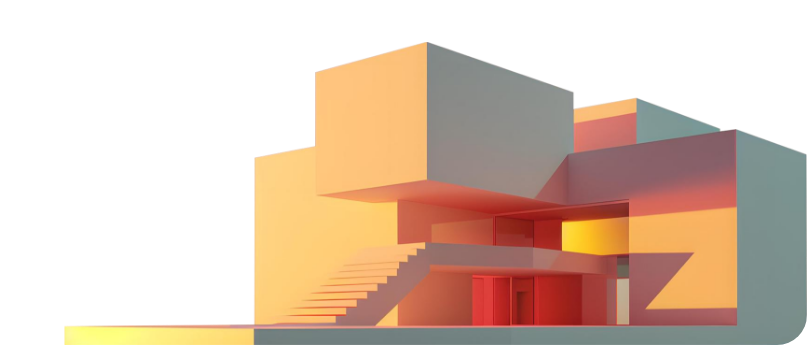 Rahul Dogra
Rahul DograEfficiency in Construction with Point Cloud to BIM Workflow
 Rahul Dogra
Rahul Dogra
Send Us Your Requirement
In the fast-paced world where technologies and innovation take the higher note, a lot of industries are gradually accepting the constant changes. Out of several different industries, the AEC industry has witnessed numerous changes that have reshaped the working approach for architects, engineers, and collaborators. With different alterations in the architecture and construction industry, accuracy, efficiency, and cost-effectiveness have always been paramount for every project. As a matter of fact, with growing advancements, building information modeling has become a revolutionary technology that has completely modified construction working methods. With BIM in the picture, many things and aspects of the construction process are simplified while enhancing the project’s accuracy level. However, BIM is not the only revolutionary concept that has contributed to the growth of the sector.
Point cloud to BIM stands as a testament in the AEC sector for precision, innovation, and more efficient reconstruction projects. In the architecture industry, BIM quickly became a vital technology. Along with that point, cloud-to-BIM technology also became integral to the BIM process. Usually, it is precedent in the pre-existing structures, which require a significant reconstruction or remodeling process. As a matter of fact, laser scanning technology enabled professionals to scan and capture detailed point cloud data of the structure, which is further used in the incorporation of 3D models. Since the inception of this innovation, it quickly became a vital process for reconstruction projects.
Seamlessly Integrate Point Cloud to BIM Workflow with Us
Get in Touch
Any reconstruction or remodeling process requires meticulous attention to each detail and ensuring that significant issues in the building are corrected, such as drainage system, electrical issues, or anything else of that matter. However, with BIM in the picture and Scan to BIM technology, the approach has been transformed while eliminating the need for time-consuming measurements. It is evident to have seamless integration with BIM software which allows architects, engineers, and other professionals to curate remodeling projects. Nonetheless, point cloud to BIM bridges the gap between reality and virtual design, allowing AEC professionals to visualize and deeply analyze every building corner. Hence, this proves that the point cloud enhances construction projects with accuracy. Discuss this in detail and understand how point cloud to BIM workflows has been a cornerstone service for the AEC industry.
What is Point Cloud to BIM?
AEC is a vast and complex industry as it covers numerous technologies, a variety of architecture processes, and other factors that make this a tremendous job. In the modern and fast-paced world, the architecture industry has eliminated the use of traditional work approaches and advanced with rapidly growing innovation that not only reshapes the sector but also provides a proficient workflow for enhancing the existing structures. As a matter of fact, point cloud to BIM is also widely known as scan to BIM, which is a process of scanning and capturing point cloud data of the structure through laser scanners and converting it into a 3D BIM model.
Breaking down the point cloud into simpler forms is a procedure of capturing the existing building via a laser scanning device that offers scanned data known as “point.” Moreover, the amalgamation of these scanned points formulates together into point clouds. Further to this point, cloud data is integrated into a 3D BIM model, which curates a built model of the scanned building. Typically, these point clouds capture information like dimensions, shapes, or spatial relationships of the scanned objects.
These points serve as a foundation for point cloud to BIM workflows, which professionals leverage to curate 3D models with precision. However, the point cloud can be challenging because of its data size and sheer complexity, which requires keen attention to each aspect. Integration with BIM ensures design efficiency, accuracy, detection of any errors or clashes, and proper project planning while minimizing the scope of rework in the projects.
Apart from such perks, point cloud to BIM enhances the project’s visualization, collaboration between AEC professionals, and accurate insights for imperative decision-making. However, it is an integral process that leads to swift and cost-efficient projects without overuse of materials. Since point cloud to BIM is a process with sheer complexity, it also requires integration into accurate software tools. Understand the key technologies or software that are usually used for the scan-to-BIM workflows.
Key Technologies for Accurate Implementation of Point Cloud to BIM
A successful reconstruction project demands accuracy, efficiency, and improved collaboration between architects, engineers, and other professionals. Professionals in the industry rely on software tools for accurate point cloud to BIM workflow for managing and processing massive amounts of point cloud datasets. For such a process to be comprehended, powerful software and technology are required for result-oriented outcomes. As rapid technology grows, the AEC sector has numerous software programs to comprehend the tedious architecture and construction processes. Architects and engineers usually use the following software to carry forward the reconstruction approach.
Key Technologies for Implementation of Point Cloud to BIM
Autodesk Revit
Autodesk Infraworks
FARO Scene
Autodesk Navisworks
Trimble RealWorks
These powerful and well-known software provide essential and advanced tools for point cloud modeling. In fact, this software allows professionals to fetch valuable insights from the scanned point cloud data and further convert it into precise 3D models. These cutting-edge technologies and software complement the entire point cloud to BIM workflow. However, converting the point data into a rich and intelligent BIM model is processed with a few steps.
Conversion of Point Cloud into BIM Models with Its Benefits
Point cloud to BIM workflow requires following the process to achieve desired results accurately. As it is a process of covering the gap between reality and the virtual realm, accuracy and efficiency are cornerstones for such projects. Typically, the entire process is divided into a few steps, and once the data acquisition through laser scanners and data registration is completed, the following are;
- Point Cloud Data Processing
- Point Cloud to BIM Conversion
- Model Refinement Accordingly
- Validation of Model
- Integration and Collaboration
To follow these steps carefully can offer the desired results and ease the complex process of reconstruction projects. However, these steps are to be followed when the laser scanning process, which is the data collection, is completed and the registration is done. With this curated procedure, AEC professionals can easily modify an old structure and give a refined look with basic facilities incorporated into the structure. As a matter of fact, the conversion of scan to BIM can bring various benefits on the table for architects and engineers. Such as,
- Unparalleled Accuracy
- Scheduled Project Timing
- Cost Efficiency
- Minimum Wastage of Materials
- Enhanced Collaboration and Communication
- Persuasive Reconstruction
Wrapping Up
Point cloud to BIM integration is a transformative and efficient approach for renovation or reconstruction projects where planning, designing, and construction are completed with unprecedented collaboration, precision, and efficiency. Since BIM is king in the architecture industry, the incorporation of a point cloud can streamline the process and give a new curve in the AEC sector. UniquesCADD can proficiently provide Scan to BIM services by a team of talented professionals and use the latest technology cost-efficiently.






